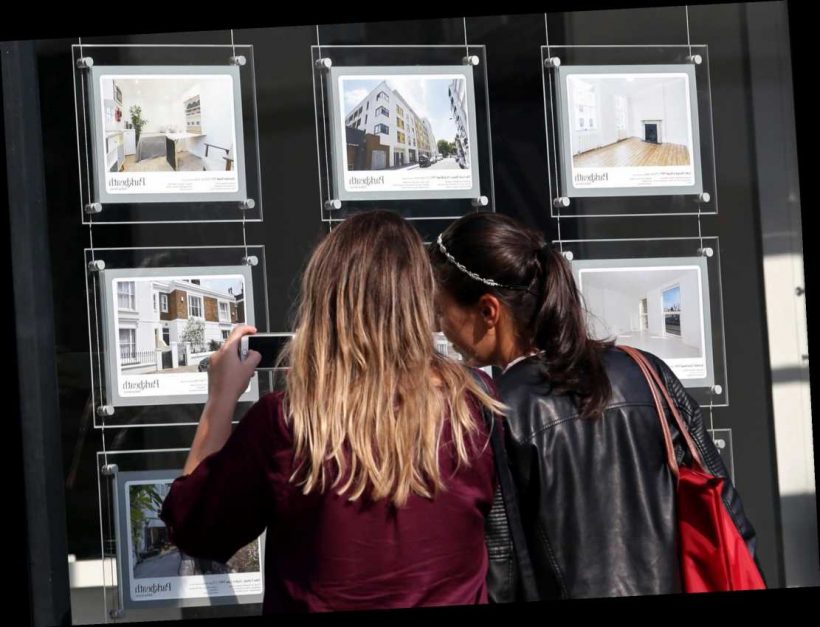LAST year, Rishi Sunak unveiled a stamp duty holiday which can save home buyers thousands of pounds.
Now, the Chancellor is set to extend the scheme in today's budget, meaning more people could take advantage of the deal – but how much will it save you?
Under the new holiday rules, the stamp duty-free threshold for homebuyers in England and Northern Ireland has risen to £500,000.
Just bear in mind that this applies to England and Northern Ireland only as stamp duty rates differ in Scotland and Wales.
The scheme was due to end on March 31, but is now expected to be extended until the end of June.
Exactly how much stamp duty you pay, depends on the value of the property you're buying, as well as whether it is a first or second home.
Here we show you how to calculate your potential savings.
How much could I save on stamp duty?
How much you will save from not having to pay stamp duty depends on how much the house costs – but it could be tens of thousands of pounds.
A home mover purchasing a house worth a typical £320,000, for example, would save £6,000, says Blick Rothenberg.
How much could I save in stamp duty?
The government has increased the stamp duty free threshold to £500,000 for home buyers, movers, and first-time buyers. Here’s how much you could save.
How much home movers or downsizers will save (if it's their only property):
- £100,000 property – No saving
- £200,000 property – £1,500 saving
- £300,000 property – £5,000 saving
- £400,000 property – £10,000 saving
- £500,000 property – £15,000 saving
How much first-time buyers will save (if it's their only property):
- £100,000 property – No saving
- £200,000 property – No saving
- £300,000 property – No saving
- £400,000 property – £5,000 saving
- £500,000 property – £10,000 saving
How much second or additional property owners will save:
- £100,000 property – £3,000 saving
- £200,000 property – £7,500 saving
- £300,000 property – £14,000 saving
- £400,000 property – £22,000 saving
- £500,000 property – £30,000 saving
Meanwhile, a downsizer purchasing a new home for £315,000 would save £5,750, according to the accountancy and tax firm.
Of course, this assumes the asking price hasn't been jacked up – something experts say could happen.
First-time buyers are already exempt from paying stamp duty on the first £300,000 of purchases for properties costing up to £500,000.
That means the holiday will only help those buying a property worth more than £300,000.They will no longer have to pay the tax on the remaining £200,000 up to the threshold.
Any first-time buyers who purchase properties worth more than £500,000 will see bigger savings as they were not eligible for the £300,000 exemption.
For instance, a first-time buyer who buys a property ahead of March 31, 2021, for £500,000 would save £10,000, Peter Gettins of mortgage broker L&C Mortgages, told the Sun.
Second home owners and buy-to-let landlords will also benefit from the increased threshold of £500,000, but they will still have to pay a surcharge compared to ordinary home buyers.
Additional properties are taxed at higher rates of stamp duty – it's three per cent on purchases up to £125,000, five per cent on the portion worth between £125,001 and £250,000 and eight per cent on costs between £250,001 and £925,000.
How do I calculate how much I will save?
To calculate how much you could save, you need to compare how much stamp duty you would have paid under the old system compared to now.
The easiest way to do this is to use a calculator. You can use the Money Advice Service tool to show how much you would normally pay while this Gov.uk has been updated to calculate the cost during the holiday. The difference between the two is your savings.
You can also work out how much you'll save manually by calculating the stamp duty costs under the normal and holiday systems.
Assuming you're purchasing a home in England and Northern Ireland that will be your only property, here are the previous stamp duty rates – add on three per cent at every stage if you're buying an additional property:
- First-time buyers pay nothing on properties below £300,000 (relief available on properties of up to £500,000)
- You pay nothing if the property costs below £125,000
- You pay two per cent if it is worth between £125,001 and £250,000
- You pay five per cent if between £250,001 and up to £925,000
- You pay ten per cent if it is between £925,001 and £1.5million
- You pay 12 per cent on anything over £1.5million
So, say you're a home mover buying a home for £320,000. In this scenario, you pay nothing on the first £125,000.
On the chunk between £125,000.01 and £250,000 you pay two per cent. To work this out subtract £125,000.01 from £250,000 to get £124,999.99.
Then divide this figure by 100 to find 1 per cent, and then multiply it by two to get 2 per cent, which is £2,499.99.
Next, you pay 5 per cent on the chunk between £250,000.01 and your house price of £320,000. So first, subtract £250,000.01 from £320,000 to get £69,999.99.
Then take this figure and divide it by 100 to get 1 per cent, and then multiply it by five to get 5 per cent, which is £3,499.99.
To find out your total stamp duty bill, you then add together £2,499.99 and £3,499.99 to get £5,999.98.
Now that the stamp duty free threshold has been moved to £500,000, you'd pay nothing on that same £320,000 property.
Source: Read Full Article

